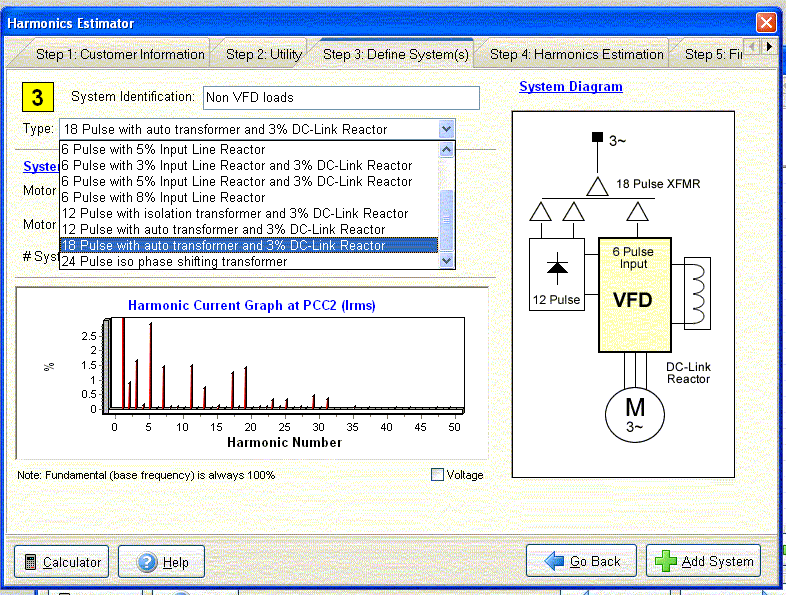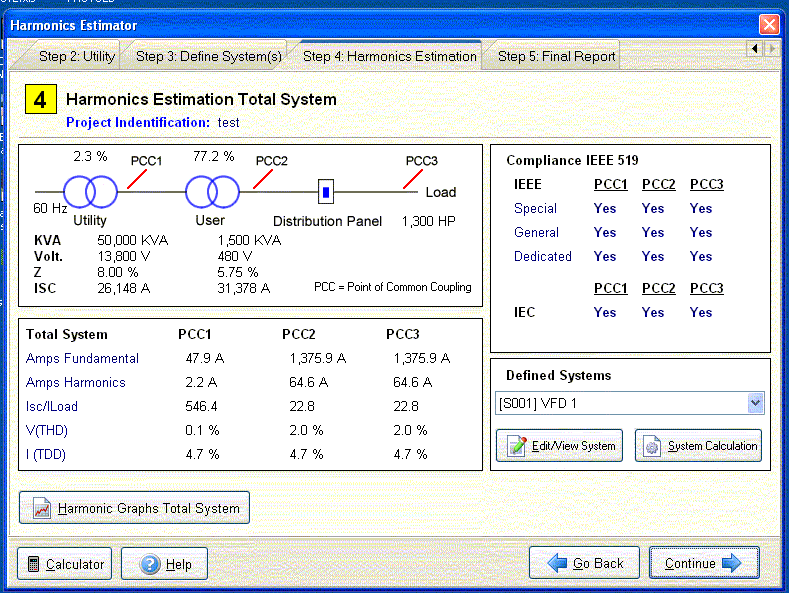Cost-effective solutions reduce harmonics and improve system reliability, efficiency.
Energy efficiency requirements, regulatory compliance, increasing energy costs and improving system and building reliability are pushing organizations to implement solutions to improve energy efficiency and support sustainability initiatives. Today, saving energy is the right thing to do.
For more than 40 years, variable frequency drives (VFDs) have been a critical component of commercial and industrial systems to improve energy efficiency. Their fundamental usage remains unchanged, while technology has evolved and improved—yielding drives that are better able than ever to reduce energy consumption and improve reliability.
As drives are increasingly incorporated into pumping systems, looking at the harmonic impact on the system and VFD performance is important to insure that the system is the most efficient and can be procured for the lowest initial cost. Traditional and newer technologies are available to minimize harmonics cost effectively. Understanding the Institute of Electrical and Electronics Engineers (IEEE) requirements will help pump operators select a VFD that is both cost effective and optimizes system performance.
The Basics
Electronically controlling the power supplied to a motor, VFDs control motor speed to closely match power requirements. The goal is to use the energy required, without waste or sacrificing the stability of the motor.
More frequently, pump systems integrate drives to achieve energy savings, precision control and intelligent automation. When applying VFDs to pumping systems, consideration should be given to harmonic mitigation and VFD energy performance.
Harmonics are distorted electrical waveforms that introduce inefficiencies into an electrical system. They produce wasteful heat and cannot be converted into useful energy. The impact of harmonics on a system is comparable to the consequences of putting bad fuel into a car—it burns inefficiently and can net more trips to the service station. The engine works harder, runs hotter and loses efficiency. It causes more pollution and failed emissions testing, resulting in fines. Although it may cost less initially, in the long run, bad fuel will cost more.
Harmonics are introduced into an electrical system as a consequence of nonlinear loads that convert AC line voltage to DC. A range of equipment can introduce harmonics, including VFDs. Too much harmonic distortion can result in slow and steady damage to sensitive electronic equipment and motors.
Know the Standards and Reduce Costs
IEEE Standard 519 addresses harmonic distortion. It is written from the perspective of utilities and establishes the level at which electrical energy is determined to be “clean.” IEEE 519 establishes the requirements for total harmonic distortion (THD). The harmonics caused by VFDs can be mitigated in many ways. This article focuses on what should be considered when initially purchasing VFDs. These considerations are not necessarily the most cost effective ways to improve the harmonics of an installed system that.
VFD Selection Criteria
An important consideration when selecting a VFD is to ensure that the harmonic mitigation solutions are integrated into the VFD. This is important to ensure that the parts of the system have been tested together and to optimize performance. Additionally, using the right mitigation techniques is imperative to meet IEEE Standard 519 cost effectively. In typical pump applications, the IEEE Standard 519 requirement is 5 percent for total harmonic distortion, but that does not mean that every VFD in the system needs to meet this 5 percent THD requirement.
 |
| Some VFD manufacturers have online tools to help select a combination of solutions (based on specific system information) that effectively meet the IEEE standard and are cost effective. |
The IEEE Standard 519 applies to the electrical system—not every component within that system. Further, designing a system that mandates that every VFD meets the 5 percent THD in many cases causes the system to be over designed and introduces unnecessary costs.
Four main harmonic mitigation methods are used today that generate the best harmonic reduction-to-cost ratio. These methods are discussed in this section, in order from lowest cost to highest cost.
Reactors or Chokes
The first approach to reducing harmonics from a drive is to add impedance to the drive, either in the form of an AC line reactor or DC bus choke.
 |
| Some drives use advacned, 18-pulse, clean power technology and are engineered to significantly reduce line harmonics at drive input terminals. |
Typically, this is a low-cost and technically simple solution, but it is likely to reduce only higher order harmonics and has little impact on the 5th and 7th harmonics. Additionally, a voltage drop is associated with these approaches, which means there are limits to the amount of reactance that can be added.
Conventional reactance is either AC or DC. Reactors are typically rated between 1.5 and 5 percent—the industry standard is 3 percent—because of diminishing returns and voltage drop issues that higher levels deliver. Typically, 3 percent reactors yield about 35 to 38 percent current distortion, with 5 percent reactors dropping this nominally. Most VFD manufactures have an offering with a 3 to 5 percent reactor integral to the VFD.
Integrated Passive Filters
Designed for small and midsize applications, typically below 100 horsepower, passive filters reduce harmonics by blocking the harmonics from being transferred to the electrical distribution system by the use of an inductive and capacitive (L-C-L) filter. They reduce line harmonics at the drive input terminals, resulting in approximately 7 percent current distortion. A primary inductor with a high level of impedance blocks higher order harmonics, while a shunt connected tuned reactor is connected with a capacitor to mitigate the 5th and 7th harmonics. Passive filters are also a relatively low-cost solution. Today’s passive filter designs do a better job in cleaning up harmonics from the drive only, as opposed to the traditional designs that absorbed system harmonics and became overloaded.
 |
| Screen shot of harmonics estimator |
Harmonic filters should always be provided by the drive manufacturer and installed in the same enclosure as the drive. Following this practice will help to ensure that the passive filter is right for the existing drive and is wired correctly.
18-Pulse Converters
A simple, single-source solution, 18-pulse converters are well-suited for critical loads and provide comprehensive protection for critical equipment. Drives with 18-pulse converters meet IEEE Standard 519 by reducing current distortion to 5 percent or less. By reducing harmonics at the drive input terminals, it stops harmonics at the source. Further, the 18-pulse converter increases the life of the drive through stable DC bus voltage. The 18-pulse converter is, when looking at the combination of harmonic mitigation and cost, the most effective solution at 100 horsepower or more. It provides 50 percent better harmonic ratings than 12-pulse converters.
The 18-pulse converters have a near sine wave input current and low harmonics. Efficient, new technology, 18-pulse drives have helped manufacturing facilities reduce harmonics. Key advantages to 18-pulse converters include:
- Typically meet IEEE standards
- Address harmonics up to the 35th
- Stops harmonics at the source
- Adaptable to future system changes
- Increases the life of the drive through a stable DC bus voltage—six large inputs are replaced with 18 small ones
Active Front-End Drives
The active front-end drive is newer technology that is designed for regenerative loads but has an added benefit of reducing harmonics. This solution combines some of the characteristics of the active filter and passive filter, as it requires an inductive-capacitive filter to separate the high frequency insulated gate bipolar transistor (IGBT) switching from the line. The expense of an active front-end drive can be prohibitive in a variety of applications and is more fitting for regenerative and common DC bus applications only. Further, the capacitive filter and IGBTs may not be as robust as the reliable, magnetic and diode technology employed in 18-pulse drives.
Cost-Effective Harmonic Mitigation
Controlling harmonic distortion reduces energy consumption and extends the life of valuable system assets. Unmanaged harmonics are expensive but so are solutions that address harmonics at the component level instead of looking at the whole system. As businesses look to minimize energy costs, examining solutions that cost effectively meet requirements is important. In this competitive business climate, look for a manufacturing partner that will help tune the drive solution to specific system requirements—saving costs immediately and in the future.

